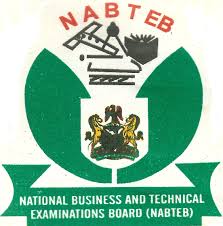2020 NABTEB PHYSICS PRACTICAL QUESTIONS/ANSWERS VERIFIED EXPO

TAKE NOTE:
^ Means raise to the power
Π Means ohm’s
^–¹ Means Raise to the power of minus 1 or inverse
=======================================
(1a)
Balance point G=50.00cm
TABULATE
S/N | m(g) | P(cm) | x(cm) | y(cm) | x^–¹ (cm^-1
UNDER S/N
1 2 3 4 5
UNDER m(g)
20.00 | 30.00 | 40.00 | 50.00 | 60.00
UNDER P(cm)
86.50 | 78.50 | 69.00 | 65.00 | 62.55
UNDER x(cm)
36.50 | 28.50 | 19.00 | 15.00 | 12.55
UNDER y(cm)
35.00 | 35.00 | 35.00 | 35.00 | 35.00
UNDER x^-1 (cm^-1)
0.027 | 0.035 | 0.053 | 0.067 | 0.080
(1avi)
Slope = ∆m/∆x^–¹
=60 – 20 / 0.080 – 0.027
= 40/0.053
Slope, s = 754.72gcm
And
S/y = 754.72/35
=21.56g
(1avii)
Precautions
(i) I avoided the parallax error when reading the meter rule.
(ii) I ensued that the suspended masses did not touch the table
(1bi)
The moment of a force about a point is the product of the force and distance about that point i.e moment = Force × Distance The S.I unit of moment is Nm
(1bii)
The centre of gravity of a body is the point at which the resultant weight of the body appears to act.
The centre of gravity of a body is related to it’s stability because of
(i) The position of the centre of gravity:- The lower the position of C•G, the more stable it is and the more the position increases in height when slightly tilted, the more is the magnitude of it’s potential energy
(ii) The moment of the centre of gravity about a given axis when slightly tilted
Where m is the mass of the meter rule
Clockwise moment = Anti – clockwise moment
200 × 20 = 300 × m
4000=30m
m=4000/30
m=133.33g
=======================================
(3a)
Eo=3.0V
TABULATE
S/N | R(ohms) | V(V) | V^–1 (V^–1) | R^–1 (ohms^–1)
UNDER S/N
1. 2. 3. 4. 5.
UNDER R(ohms)
1.00 2.00 3.00 4.00 5.00
UNDER V(V)
1.80 2.00 2.20 2.50 2.70
UNDER V^–1 (V^–1)
0.56 0.50 0.45 0.40 0.37
UNDER R^–1 (ohms^–1)
1.00 0.50 0.33 0.25 0.20
Slope, s = ∆V^–¹ / ∆R^–¹
= 0.67 – 0.35 / 1.0 – 0.11
= 0.32/0.89
Slope, s = 0.36ohmsv^–¹
=0.36A^–¹
Intercept k = 0.31v^–¹
(3avi)
T=S/K
=0.36/0.31
=1.16ohms
(3avii)
Precautions
(i) I ensured tight connection of connecting wires to the terminals
(ii) I ensured that the key was open after each reading so that the battery did not run down quickly
(3bi)
Electromotive force of a cell (Emf) is the potential difference across the terminal of the cell when it is not delivering any current to the circuit
(3bii)
Ohmic conductors are;
(i) Coppers
(ii) Aluminium
(iii) Silver
Non ohmic conductor are;
(i) Diode
(ii) Transistor
The unit of conductivity is (Πm)^–¹
(3biii)
E=3v
R=2 ohms
I=0.5A
r=?
I=E/R + r
0.5=3/2 + r
Cross multiply
3=0.5 (2 + r)
3=1 + 0.5r
Collect like terms
3–1 = 0.5r
2=0.5r
Divide both sides by 0.5
r=2/0.5
r=4 ohm’s
=====================================
(1)
Graph.

=====================================
(3)
Graph.
Categories: NABTEB







